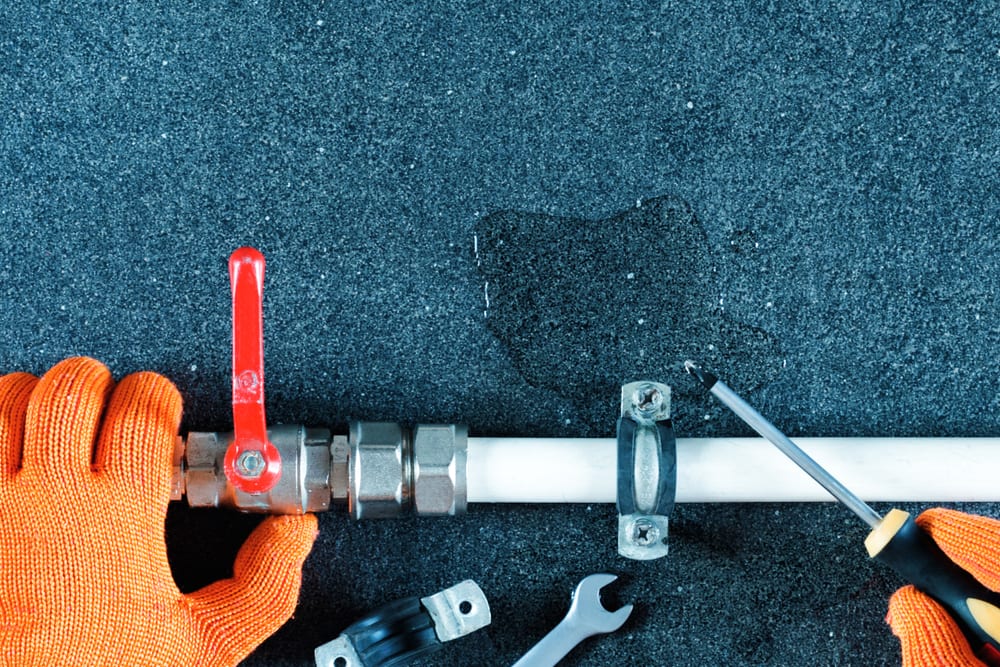Finding Hidden Water Line Leaks: Six Smart Methods
Finding Hidden Water Line Leaks: Six Smart Methods
Blog Article
We have come across this great article on Hacks to detect leaks down the page on the net and think it made sense to relate it with you on this page.

Early discovery of dripping water lines can alleviate a prospective catastrophe. Some little water leaks might not be noticeable.
1. Check Out the Water Meter
Every house has a water meter. Examining it is a guaranteed way that helps you find leaks. For starters, switch off all the water resources. Make certain nobody will flush, utilize the faucet, shower, run the cleaning device or dishwasher. From there, go to the meter and watch if it will alter. Because no one is utilizing it, there should be no movements. That indicates a fast-moving leak if it moves. Furthermore, if you spot no changes, wait a hr or 2 and check back once again. This suggests you may have a slow-moving leak that could also be underground.
2. Check Water Consumption
Analyze your water expenses and track your water intake. As the one paying it, you should discover if there are any type of disparities. If you identify sudden changes, in spite of your consumption coinciding, it implies that you have leakages in your plumbing system. Remember, your water expense need to fall under the exact same array every month. An unexpected spike in your expense shows a fast-moving leak.
At the same time, a steady rise monthly, despite the very same behaviors, shows you have a sluggish leak that's likewise gradually escalating. Call a plumber to thoroughly check your residential property, especially if you feel a warm area on your floor with piping underneath.
3. Do a Food Coloring Examination
When it comes to water usage, 30% comes from commodes. If the color somehow infiltrates your bowl during that time without flushing, there's a leakage in between the container as well as bowl.
4. Asses Outside Lines
Don't fail to remember to examine your exterior water lines as well. Test spigots by connecting a garden hose. Needs to water leak out of the link, you have a loosened rubber gasket. Change this and ensure all connections are limited. If you've obtained a sprinkler system, it will certainly assist get it expertly examined as well as maintained every year. One tiny leakage can waste lots of water and also increase your water expense.
5. Assess the scenario and inspect
Homeowners must make it a behavior to examine under the sink counters and also inside cupboards for any type of bad odor or mold development. These 2 warnings suggest a leak so timely interest is needed. Doing routine assessments, also bi-annually, can conserve you from a major issue.
Inspect for stainings and compromising as the majority of pipelines and appliances have a life expectancy. If you believe leaking water lines in your plumbing system, do not wait for it to rise.
Early detection of dripping water lines can alleviate a prospective disaster. Some little water leaks may not be noticeable. Examining it is a guaranteed means that helps you find leakages. One small leakage can throw away lots of water and also increase your water expense.
If you presume dripping water lines in your plumbing system, don't wait for it to intensify.
WARNING SIGNS OF WATER LEAKAGE BEHIND THE WALL
PERSISTENT MUSTY ODORS
As water slowly drips from a leaky pipe inside the wall, flooring and sheetrock stay damp and develop an odor similar to wet cardboard. It generates a musty smell that can help you find hidden leaks.
MOLD IN UNUSUAL AREAS
Mold usually grows in wet areas like kitchens, baths and laundry rooms. If you spot the stuff on walls or baseboards in other rooms of the house, it’s a good indicator of undetected water leaks.
STAINS THAT GROW
When mold thrives around a leaky pipe, it sometimes takes hold on the inside surface of the affected wall. A growing stain on otherwise clean sheetrock is often your sign of a hidden plumbing problem.
PEELING OR BUBBLING WALLPAPER / PAINT
This clue is easy to miss in rooms that don’t get much use. When you see wallpaper separating along seams or paint bubbling or flaking off the wall, blame sheetrock that stays wet because of an undetected leak.
BUCKLED CEILINGS AND STAINED FLOORS
If ceilings or floors in bathrooms, kitchens or laundry areas develop structural problems, don’t rule out constant damp inside the walls. Wet sheetrock can affect adjacent framing, flooring and ceilings.
https://www.servicemasterbyzaba.com/blog/how-to-detect-water-leakage-in-walls/

Do you appreciate reading about Leaking water lines? Place feedback down the page. We'd be delighted to know your responses about this article. In hopes that you come back again in the future. In case you enjoyed our page kindly don't forget to share it. I thank you for reading our article about Locating water leaks.
Let's solve it, call now! Report this page